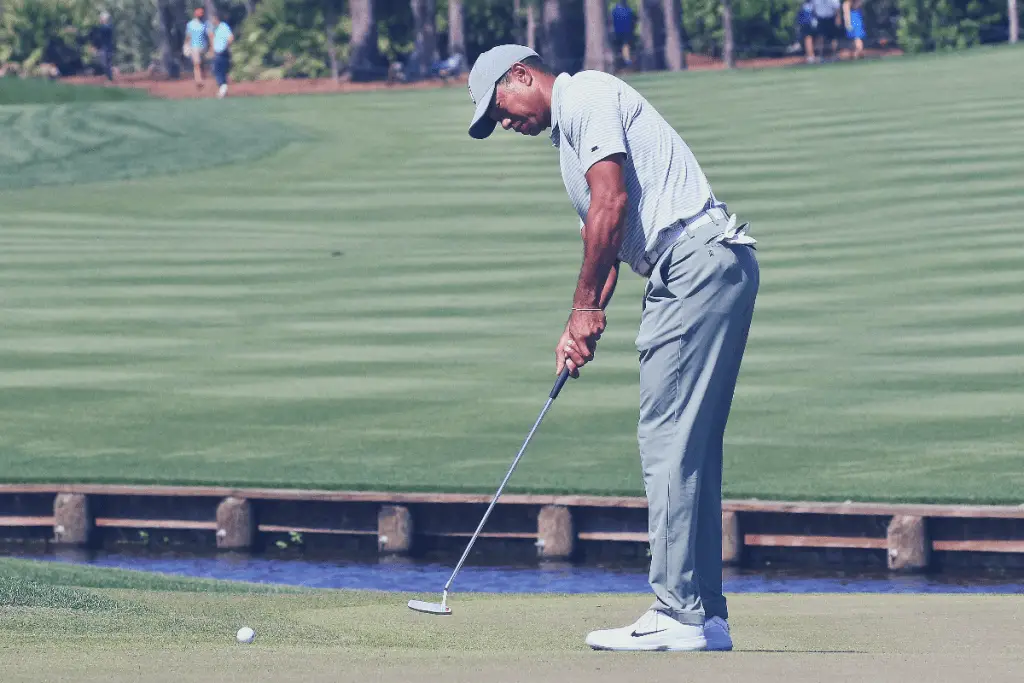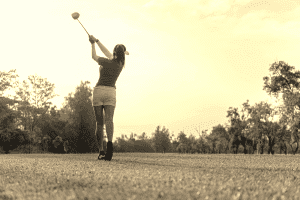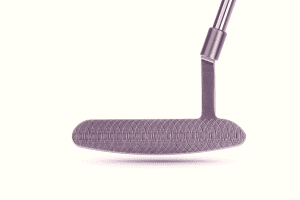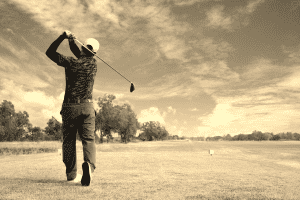One of the most famous adages in golf is ‘drive for show, putt for dough’. If you haven’t heard that before, I question the banter in your friend group. Your putter is indisputably one of the most critical clubs in your bag. A good putter will give you confidence over putts, and lead you to post lower scores. Putting is make or break for any golfer’s game.
Many beginners and high handicappers fail to remember that a stroke of a putter counts as much as a 300 yard drive. Practice makes perfect when it comes to putting, but you have to begin your journey to greatness with a solid putter that is a beast in delivering consistent distance and accuracy out on the greens.
As a beginner, you may overlook the importance of a great putter and putting in practice on the green. You might not be sure why you’d even need a new putter, or what to even look at when you’re going to buy one. With all that being said, we’ll walk you through the 7 best putters for high handicappers and a beginners guide on what to look for when you’re buying one!
Short on time? Here’s our quick list
Best Putter For Beginners: S7K Standing Putter
Our Value Pick: TaylorMade Spider Putter
Our Premium Pick Odyssey Stroke Lab Putter– Black
Best Budget option: Wilson Harmonized
Buyers Guide: What to Look for in a Putter
As with most golf equipment, the number of options for putters is staggering. As a high handicapper, you need to know what to look for and how to evaluate different putters to decide which is for you. Here a few criteria a beginner can consider when upgrading your putter.
Putter Head Shape and Design
This is one of the top things to consider when you’re purchasing a new putter; there are over a dozen different putter head shapes out there, but they all really boil down to a couple options: blade putters and mallet putters. If you’ve only ever used one putter, we encourage you to go out and look at different options. Mallet style putters tend to have additional alignment aids, and re-balance the putter in a different way through perimeter weighting. If you struggle with alignment, it may make sense to go for a mallet putter style over a blade.
Blade Putter: For Precision and Feel
The most traditional option is a blade putter, which has been around as long as the game of golf itself. Blade putters are still the most popular style putter in golf, but tend to be favored by more experienced players rather than high handicappers or beginners. Blade putters can be a bit better for distance control, and accuracy when hitting longer putts. Players who favor blade putters usually like to putt with feel rather than visualization.
Mallet Putter: For Forgiveness and Stability
A mallet putter will tend to be a little bit more stable through your stroke, and provide more forgiveness on off center hits thanks to a higher moment of inertia. If you don’t want to practice putting as much, a mallet may help you make better strokes more often. Mallet putters have been growing in popularity among amateur golfers and PGA players alike, and as of March 2020 30 of the Top 50 players for Strokes Gained: Putting use a mallet style putter. Mallet putters tend to be perimeter weighted putters, improving overall balance.
Putter Face: Milled vs Insert
The technology in the putter face will impact the feedback you get on a mis-hit, and the feel on the shot.
A milled putter face will display a pattern on the face of the putter, and don’t include any type of insert. The pattern is usually pretty complex looking, and provides a higher end aesthetic. The milled style tends to produce a higher pitch sound, and comes off the face firmly. On the other hand, an insert putter face is quite literally a soft insert on the putter face, giving the putter a distinctly different look. Generally, an insert will provide a much softer feel on impact, while a milled face will be firmer. Inserts have a softer feel due to a more muted sound, and the ball usually doesn’t travel as far due to less efficient energy transfer at impact.
So, how do you choose? Try each of them out. Part of it comes down to how you think the putter looks; I much prefer the sleek look of a milled face, but at the end of the day it all comes down to your preference!
Budget
In my opinion, it’s better to wait until you have the money for a quality putter instead of going for the cheapest option. A high quality putter has a better feel, puts a better roll on the ball, and usually has better technology in the putter face. You can find great options in the $100 to $200 range, but much higher or lower may not be worth it. As a high handicapper or even a beginner golfer, you can find great value putters in that price range.
Length
The typical putter length is between 34″ and 35″, and this should work for most golfers of average height. The only reason you should look at different lengths is if you’re relatively short, or tall. If you’re on the shorter side it may make sense to go for a 33″, and on the taller side go for a 35″ putter.
Grip
The grip directly impacts your putting performance. So, it’s essential to select a product that goes hand-in-hand with your putting style. While various grips will taper down, most golfers prefer a thicker grip for better comfort. I started using a standard width putter grip, however I’ve since switched to a SuperStroke grip for the last couple years; I find the thicker grip to help me stay stable and consistent throughout my putt.
Offset
Putter offset is defined as the shaft placement in relation to the putter face. Some players like offset putters, because the force your hands to be ahead of the putter face during the putting stroke. Offset can be created either with a slightly bent shaft or with the hosel.
So what’s the point, and why should you care about offset as a beginner? Putter offset has a pretty big impact on the way your putter naturally aims. With more offset, your putter will naturally make you aim more to the left. You’ll also tend to hit the golf ball with an upward strike with an offset putter.
Our advice to high handicappers is play around with this: try out putters with no offset, partially offset and full offset shafts to determine which feels best for you.
Toe Hang
No, I didn’t make this up.
Unless you’ve done a ton of research on putters, you probably are saying to yourself “what the hell is toe hang?”
Toe hang refers to the weight balance of the putter head- you’ve probably heard the terms toe balanced and face balanced putters. For a toe balanced putter, when you balance your putter from the shaft on your finger, the toe will point to the ground. On the other hand, a face balanced putter will end up with the putter face pointing toward the sky! The more the toe hangs toward the ground, the more toe hang your putter has.
OK. The point of this is, certain putting styles favor toe hang and others favor face balanced putters. If you tend to have a natural arc in your putting stroke, a putter with more toe hang will help you straighten your putts, because they slow down the rotation of the putter face. If you have a straight back and straight through putting stroke, a face balanced putter will naturally compliment your putting stroke better.
Most blade putters tend to have more toe hang, while mallet style putters tend to be more face balanced.
If you don’t know which putting style you have, hit the practice green and try to take a video, or at least notice your natural putting stroke. Visualizing the style you have can make you choose a better putter for your game!
Best Putters for High Handicappers: The Results
Best Putter for Beginners: S7K Standing Putter

This is a putter that you may have seen on tv during an infomercial. I am not someone who typically promotes products like this, as I think they can appear a bit gimmicky, but this is definitely an exception to that rule. For anyone who struggles with putting, the S7K Standing Putter is sure to improve your game on the green and is perfect for beginners.
This putter stands on its own, which is the main benefit for beginners here. On the green, many beginners struggle to line putts up well and often end up missing their target by a pretty wide margin. With the S7K, you can line your putter up, then leave it in position and walk behind it to see if you’re aimed on the correct line. It stands on it’s own on slopes, and is designed to drastically improve alignment and set up on every shot.
The club has a nice sound to it, and gives feedback on mis-hits. S7K gives you a 1-year full warranty on the putter, as a stamp of confidence that it’ll improve your game. This is easily our top pick for the best putter for beginners thanks to the ease of use and the improvements it helps golfers make.
- Stands on its own
- Stays balanced on all slopes
- Excellent alignment aids
- Perfect for beginners
- 1- year warranty
- Somewhat expensive
- Need to be careful that it doesn’t rust
Best Blade Putter for High Handicappers: Odyssey White Hot Pro 2.0

With the White Hot insert included, the Odyssey White Hot Pro 2.0 delivers great feel, sound, and performance. Armed with a timeless blade, this product gives the club an amazing feel while enhancing alignment.
With the shaft slightly offset, this Odyssey blade keeps the hands in front of the ball on impact to guarantee constant upward strikes. The alignment aids on the top of the putter are clean and clear, promoting stroke accuracy and consistency. The Hot Pro is well designed, and trusted by Pro and amateur golfers alike. If you’re on the market for a blade putter, this is a solid option that isn’t too expensive.
- Highly accurate and forgiving
- White Hot inserts that deliver excellent sound, feel, and performance
- Amazing feel on impact
- Timeless blade head design for optimum alignment
- Trusted on the PGA Tour
- Sophisticated finish that minimizes glare
- Some players find this putter to be a bit light
- Minimal alignment aid
Our Value Pick: TaylorMade Spider Putter

If you know anything about the Taylormade Spider Putter line, you’re probably confused as to why I’ve listed this as our value pick; the Spider typically retails for about $350. This is a slightly outdated model, originally released in 2017, but not lacking much in terms of quality. This is a high end mallet putter which is a perfect option for beginners or high handicappers.
The Taylormade Spider is a tour putter that is famously used by the likes of Jason Day and Dustin Johnson. Taylormade uses a lightweight 6061 aluminum core coupled with heavy-duty 3014 stainless steel for a high MOI. This combo ensures that the clubface remains square to the path throughout your stroke. The Pure roll insert promotes better distance control and forward roll.
Frankly, this is a high end putter that would serve any golfer well. If you’re looking for a great bang for buck option, I’d definitely recommend checking this one out!
- Solid feel that sets it apart from the pack
- Very easy to square up
- Great forward roll and distance control
- Forgiving of mis-hit putts
- Built from high end material
- Well designed alignment lines
- If you haven’t used a mallet style putter, it can take some getting used to
- Not easy to scoop up the ball from the green
Premium Option: Odyssey Stroke Lab Putter (Black)

The Odyssey Stroke Lab Putter line was created to innovate on the traditional putter, and they mainly do so by modifying the shaft. Odyssey uses a multi-material Stroke Lab shaft, aiming to improve both tempo and consistency in the putter.
The shaft is 40g lighter than other Odyssey mallet putters, and the weight is rebalanced to the grip and the putter head. They also include their tried and tested (and PGA winning) White Hot Microhinge insert, delivering a firm feel and great sound. This year’s model is made with a sleek and classy black and white design, which I found to be stunning.
Odyssey is the most popular putter on tour, and this is the Cadillac of Odyssey putters. The Stroke Labs mallet putter has been innovated to deliver great feel and consistency, and doesn’t dissapoint. If you’re a golfer looking for a premium putter but don’t want to shell out for a Scotty Cameron, this is a perfect fit.
- 12 different putter head options
- Sleek black finish
- Unique weighting designed to deliver consistency
- Great feel and sound
- One of the most trusted putter brands on the market
- Pricey
Wilson Harmonized: Best Budget Putter for High Handicappers

The Wilson Harmonized putter is a classic blade option that delivers a lot of value for anyone who is on a tighter budget. Overall it is well designed, and is featured in one of the most popular product lines in golf.
The Harmonized putter features microinjection polymer inserts on the clubface that provide a crisp, clean feel on impact. The heel/toe weighting makes this putter well balanced, and it features multiple alignment lines for a precise stroke. The oversize, all-weather, three-piece paddle grip with a vertical seam construction at the back provides excellent control and feel.
Overall, if you’re looking for a good bang for buck option and would like a name brand putter, this is a really decent option.
- Soft, comfortable grip
- Affordable despite being excellent quality
- Great alignment features
- Ideal weight for smooth tempo
- No headcover
- Some players felt like it was cheaply made
- Less forgiving than other options
Pinemeadow PGX: Our Budget Runner Up

Pinemeadow have been a low cost golf club maker for many years, and their equipment quality is generally good for the price. In a semi-mallet putter style, this Pinemeadow PGX putter delivers steady strokes and is a great budget friendly choice for perfecting your game.
Weighing 380g and being 40g heavier compared to other semi-mallet putter products, the PGX putter is “tour weighted” and perfect for fast greens. The PGX putter has really clean alignment lines and features an elegant pearl white finish. The contrast it creates on the green makes it easy for golfers to maintain focus on the alignment aids.
Pinemeadow compares the performance of their PGX putter to a Taylormade putter, the Rossa, but is priced at a fraction of the cost. If you’re looking for tried and tested quality at a cheap price, this is probably your best bet.
- Weighted perfectly for fast greens
- Sturdy feel
- Well made
- Custom PGX headcover included
- Clean and well placed alignment lines
- Sleek white finish
- Reduced skid
- Extremely affordable compared to other putters available
- Tour weighting could throw some players off at first
- Shaft could be higher quality
Worth a Look: Cleveland Huntington Beach

Designed from soft and durable stainless steel, Huntington Beach has specialized in accurate alignment and stroke stability. Weighing 360 grams, this putter has a Precision-Milled face and a mid-size grip. Overall, this is a solid putter at a decent price that delivers great feel and a consistent roll.
- Built from durable 304 stainless steel
- Affordable
- Provides stroke stability
- Tour proven alignment line
- Doesn’t deliver great feedback on mis-hits
FAQ
How Does MOI (Moment of Inertia) Impact Putting?
The simple explanation is that MOI measures how much the putter twists on off center hits. More specifically, MOI measures the resistance of face twist on an off center hit. If your putter has a high MOI, that means it has a higher resistance to twisting, and will result in better putts.
High MOI can roughly translate to more forgiveness on imperfect putts, leading to straighter putts and more accurate putting distance. A blade putter will have much less MOI than a mallet putter, meaning you’ll need to hit the center of the face to get the best putts, every time.
Are Heavier Putters Better for High Handicappers?
Yes, more often than not a heavier putter head is going to be much better than a lighter putter head for a high handicapper. With a lighter putter, it becomes much more difficult to judge distance control, and having to execute your stroke with a faster tempo can ruin your line, making you miss your putt. A heavier putter promotes a better feel for your stroke, and makes it easier to execute longer putts.
What is the Advantage of a Thick Putter Grip?
A thick putter grip can actually make your putting stroke more consistent, and help you improve dramatically. A thick putter grip will significantly reduce wrist action during a putt, which helps you manipulate the putter face less. The result ends up being a much smoother pendulum like stroke, which tends to be much more accurate. A thicker grip is a great putter grip for any beginner or high handicapper, thanks to the fact that it promotes naturally better putting habits.
Final thoughts
With many options on the market, it can be tough to assess which putter is best for your game. It’s important to consider the putter head shape, as well as the feel when buying. Overall, we found the best putter for beginners is the S7K Standing Putter; the putter allows you to evaluate your alignment in real time, drastically improving your chances for success. In our opinion, the S7K is also the best putter for beginners for the same reason. That said, a great mallet putter option is also the Taylormade Spider.
I hope you enjoyed this post, and thanks for reading! Don’t forget to check out more of our posts, like our most forgiving driver guide!









